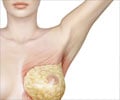Enhanced mortality benefits observed with annual breast cancer screening from ages 40-79, with minimal chances of harm per examination.

Outcomes of Breast Cancer Screening Strategies Based on Cancer Intervention and Surveillance Modeling Network Estimates
Go to source) “There is an ongoing debate over the recommendations for breast cancer screening, specifically about when to start and the frequency of screening,” said lead researcher Debra L. Monticciolo, M.D., professor of radiology at Dartmouth Geisel School of Medicine in Hanover, New Hampshire.
Changing Guidelines on Breast Cancer Screening Participation
Dr. Monticciolo said a recommendation by the U.S. Preventive Services Task Force (USPSTF) in 2009 to screen every other year, or biennially, beginning at age 50 resulted in a nationwide decline in screening participation. The USPSTF drafted new recommendations in 2023, suggesting women participate in biennial screening between 40 and 74. The American College of Radiology, the Society of Breast Imaging and the National Comprehensive Cancer Network recommend annual screening for women at average risk for breast cancer beginning at age 40 and continuing as long as the woman is in good health.‘Yearly screening for breast cancer in women aged 40-79, using digital mammography or tomosynthesis, resulted in a mortality reduction of 41.7%. #breastcancer #mammography #breastcancerscreening #womenhealth’





In the study, Dr. Monticciolo and colleagues performed a secondary analysis of Cancer Intervention and Surveillance Modeling Network (CISNET) 2023 median estimates of breast cancer screening outcomes. CISNET modeling data gives researchers the opportunity to estimate the outcomes of screening at various frequencies and starting ages using U.S. data. Did You Know?
Breast cancer ranks second in U.S. cancer deaths for women. Regular mammography reduces deaths by 40%, yet only around 50% of eligible women partake in annual screening.
Biennial screening of women 50-74 and 40-74 showed mortality reduction of 25.4% and 30%, respectively. Annual screening of women 40-79 years showed the lowest per mammogram false-positive screens (6.5%) and benign biopsies (0.88%) compared to other screening scenarios.
“The biggest takeaway point of our study is that annual screening beginning at 40 and continuing to at least age 79 gives the highest mortality reduction, the most cancer deaths averted, and the most years of life gained,” Dr. Monticciolo said. “There’s a huge benefit to screening annually until at least 79 and even more benefit if women are screened past 79.”
Dr. Monticciolo said that although the USPSTF uses CISNET modeling to formulate its recommendations, it refers to recall rates and benign biopsies as harms, rather than risks.
Advertisement
According to the researchers’ analyses, the chance of a woman having a benign biopsy following annual screening is less than 1%, and all recall rates for screening mammography are under 10%. When screening is performed annually with tomosynthesis, the recall rate decreases to 6.5%.
Dr. Monticciolo said she hopes that her study will add to the body of literature that supports annual screening beginning at age 40 as the best way to diagnose cancer early.
“This paper is important because it shows once again that there’s a tremendous increase in mortality benefit by screening annually between the ages of 40-79, and that the chances of experiencing harm are low on a per-exam basis,” she said. “It comes down to valuing women’s lives. I am hoping that primary care physicians see that risks of screening are manageable, and the benefits are tremendous. We need to do this for women.”
Reference:
- Outcomes of Breast Cancer Screening Strategies Based on Cancer Intervention and Surveillance Modeling Network Estimates - (https://pubs.rsna.org/journal/radiology)















